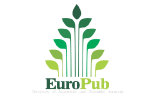Superando las limitaciones del ionómero de vidrio: adhesión entre una zirconia y un cemento sin 10-MDP. Estudio in vitro
DOI:
https://doi.org/10.18537/fouc.v03.n01.a02Palabras clave:
Zirconia 3Y-TZP, adhesión, 10-MDP, Peak ZM, Single Bond Universal, cemento resinosoResumen
Introducción: Obtener una adhesión fuerte y duradera entre un cemento resinoso sin 10-MDP y una zirconia es un desafío. Objetivo: Comparar la fuerza de adhesión entre la zirconia y un cemento resinoso sin 10-MDP por medio de dos adhesivos: Peak ZM y Single Bond Universal. Materiales y métodos: Se utilizaron 30 láminas de zirconia 3Y-TZP que fueron divididas en 3 grupos: Grupo A (control), cementado con ionómero de vidrio; Grupo B, tratado con Single Bond Universal; Grupo C, tratado con Peak ZM. Los grupos B y C utilizaron un cemento resinoso sin 10-MDP. Se elaboraron 60 microtubos de resina y se adhirieron a las láminas de zirconia. La mitad de las muestras de cada grupo se evaluaron inmediatamente y la otra mitad se sometió a 5 000 ciclos térmicos. La fuerza de adhesión se midió mediante un ensayo de cizallamiento. Estadística: Un ANOVA de dos factores, seguido de un post hoc de Tukey fue realizado para analizar los datos. Un valor p≤ 0,05 fue utilizado en toda la estadística. Resultados: Se encontró una diferencia significativa entre los grupos (p<0,001). El grupo C (Peak ZM) presentó la mayor fuerza de adhesión en ambos momentos de evaluación, 13,54 MPa para inmediatos y 8,05 MPa para envejecidos. El Grupo B tuvo promedios de 5,92 MPa para inmediatos y 2,18 MPa para envejecidos. En el Grupo A no hubo adhesión. Conclusión: El Peak ZM presenta una mejor adhesión a la zirconia que el Single Bond Universal, en combinación con un cemento sin 10-MDP.
Descargas
Citas
Yazigi C, Alawi S, Wille S, Lehmann F, Kern M. Durability of resin bonding to dental 3Y-TZP zirconia using different adhesive systems. Materials. 2024;17(2):424. [Internet]. 15 de enero de 2024 [citado 2 de febrero de 2024];17(2):424. Disponible en: https://www.ncbi.nlm.nih.gov/pmc/articles/PMC10820740/
Asharaf S, Karthigeyan AS, Deivanai M, Mani R. Zirconia: properties and application" a review. Pakistan Oral & Dental Journal. 2014;34(1).
Scaminaci Russo D, Cinelli F, Sarti C, Giachetti L. Adhesion to zirconia: A systematic review of current conditioning methods and bonding materials. Dentistry journal. 2019;7(3):74. [Internet]. 1 de agosto de 2019 [citado 17 de julio de 2023];7(3):74. Disponible en: https://www.ncbi.nlm.nih.gov/pmc/articles/PMC6784479/
Go EJ, Shin Y, Park JW. Evaluation of the microshear bond strength of MDP-containing and non–MDP-containing self-adhesive resin cement on zirconia restoration. Operative dentistry. 2019;44(4):379-85.
De-Paula DM, Loguercio AD, Reis A, Frota NM, Melo R, Yoshihara K, et al. Micro‐Raman Vibrational Identification of 10‐MDP Bond to Zirconia and Shear Bond Strength Analysis. BioMed research international. 2017;2017(1):8756396.
Lima RBW, Barreto SC, Alfrisany NM, Porto TS, De Souza GM, De Goes MF. Effect of silane and MDP-based primers on physico-chemical properties of zirconia and its bond strength to resin cement. Dental materials : official publication of the Academy of Dental Materials. 2019;35(11):1557-67. [Internet]. enero de 2023 [citado 13 de diciembre de 2023];13(14):8369. Disponible en: https://www.mdpi.com/2076-3417/13/14/8369
Hajjaj MS, Barboud HM, Almashabi HK, Alzahrani SJ, Abu Haimed TS, Alnoury AS, et al. Evaluation of different priming agents with conventional and bioactive self-adhesive resin cements on shear bond strength to zirconia. Appl Sci. 2023;13(14):8369.
Sakaguchi RL, Powers JM. Craig’s Restorative. Dent Mater. 2012:161-98.
Freedman GA. Contemporary esthetic dentistry: Elsevier Health Sciences; 2011.
Valente F, Mavriqi L, Traini T. Effects of 10-MDP based primer on shear bond strength between zirconia and new experimental resin cement. Materials. 2020;13(1):235.
Čokić SM, Cóndor M, Vleugels J, Meerbeek BV, Oosterwyck HV, Inokoshi M, et al. Mechanical properties-translucency-microstructure relationships in commercial monolayer and multilayer monolithic zirconia ceramics. Dent Mater. 2022;38(5):797-810.
Ahmed WM, Troczynski T, McCullagh AP, Wyatt CCL, Carvalho RM. The influence of altering sintering protocols on the optical and mechanical properties of zirconia: A review. J Esthetic and restorative dentistry : official publication of the American Academy of Esthet Restor Dent 2019;31(5):423-30.
Abdou A, Hussein N, Kusumasari C, Abo-Alazm EA, Rizk A. Alumina and glass-bead blasting effect on bond strength of zirconia using 10-methacryloyloxydecyl dihydrogen phosphate (MDP) containing self-adhesive resin cement and primers. Sci Rep. 2023;13(1):19127.
Ramos RQ, Mercelis B, Ahmed MH, Peumans M, Lopes GC, Van Meerbeek B. Bonding of Composite Cements Containing 10-MDP to Zirconia Ceramics Without Dedicated Ceramic Primer. J Adhes Dent. 2024;26(1):135-45.
Li R, Wang C, Ma SQ, Liu ZH, Zang CC, Zhang WY, et al. High bonding strength between zirconia and composite resin based on combined surface treatment for dental restorations. J Appl Biomater Funct Mater. 2020;18:2280800020928655.
Nagaoka N, Yoshihara K, Feitosa VP, Tamada Y, Irie M, Yoshida Y, et al. Chemical interaction mechanism of 10-MDP with zirconia. Sci Rep. 2017;7(1):1-7.
Noronha MdS, Fronza BM, André CB, de Castro EF, Soto‐Montero J, Price RB, et al. Effect of zirconia decontamination protocols on bond strength and surface wettability. J Esthet Restor Dent. 2020;32(5):521-9.
Yim KY, Beh YH, Goo CL. Effects of Surface Treatment and Thermocycling on the Shear Bond Strength of Zirconia-Reinforced Lithium Silicate Ceramic. J Adhes Dent. 2023;25(1):125-32.
Simasetha S, Klaisiri A, Sriamporn T, Sappayatosok K, Thamrongananskul N. Surface Treatment Effect on Shear Bond Strength between Lithium Disilicate Glass-Ceramic and Resin Cement. Eur J Dent. 2022;16(2):373-80.
Calixto ET, Kelmer VF, Komegae GH, Pacheco RR, Pini N, Sundfeld D. Influence of Varied Silane Commercial Brands and Adhesive Application on Bond Strength and Stability to Lithium Disilicate Glass Ceramic. Oper Dent. 2024;49(3):325-35.
Santos Silva MMD, Boucault CHM, Steagall W, Hanashiro FS, Cardoso CAB, de Souza-Zaroni WC, et al. Influence of Different Surface Treatments on the Bond Strength of Yttria-Stabilized Tetragonal Zirconia Ceramic. Photobiomodul, Photomed Laser Surg. 2024;42(5):343-9.
Akyıl MŞ, Uzun İH, Bayındır F. Bond strength of resin cement to yttrium-stabilized tetragonal zirconia ceramic treated with air abrasion, silica coating, and laser irradiation. Photomed Laser Surg. 2010;28(6):801-8. [Internet]. diciembre de 2010 [citado 6 de marzo de 2024];28(6):801-8. Disponible en: https://www.liebertpub.com/doi/abs/10.1089/pho.2009.2697
Hosseini MH, Gorjizadeh F, Etemadi A, Baghaeian P. Shear bond strength of metal brackets to zirconia treated with Er: YAG laser sandblasting and silane. J Iran Dent Assoc. 2016;28(3):110-7.
de Lucena Pereira L, Campos F, Dal Piva A, Gondim LD, de Assunção Souza RO, Oezcan M. Can application of universal primers alone be a substitute for airborne-particle abrasion to improve adhesion of resin cement to zirconia. J Adhes Dent. 2015;17:169-74.
Alammar A, Blatz MB. The resin bond to high‐translucent zirconia—A systematic review. J Esthet Restor Dent. 2022;34(1):117-35.
Śmielak B, Klimek L. Effect of air abrasion on the number of particles embedded in zironia. Materials. 2018;11(2):259.
Abhishek G, Vishwanath SK, Nair A, Prakash N, Chakrabarty A, Malalur AK. Comparative evaluation of bond strength of resin cements with and without 10-methacryloyloxydecyl dihydrogen phosphate (MDP) to zirconia and effect of thermocycling on bond strength - An in vitro study. J Clin Exp Dent. 2022;14(4):e316-e20.
Chen C, Xie H, Song X, Burrow MF, Chen G, Zhang F. Evaluation of a commercial primer for bonding of zirconia to two different resin composite cements. J Adhes Dent. 2014;16(2):169-76.
Heboyan A, Vardanyan A, Karobari MI, Marya A, Avagyan T, Tebyaniyan H, et al. Dental Luting Cements: An Updated Comprehensive Review. Molecules. 2023;28(4).
Fabris D, Souza JC, Silva FS, Fredel M, Gasik M, Henriques B. Influence of specimens’ geometry and materials on the thermal stresses in dental restorative materials during thermal cycling. J Dent. 2018;69:41-8.
Descargas
Publicado
Cómo citar
Número
Sección
Licencia
Derechos de autor 2025 Revista de la Facultad de Odontología de la Universidad de Cuenca

Esta obra está bajo una licencia internacional Creative Commons Atribución-NoComercial-CompartirIgual 4.0.











